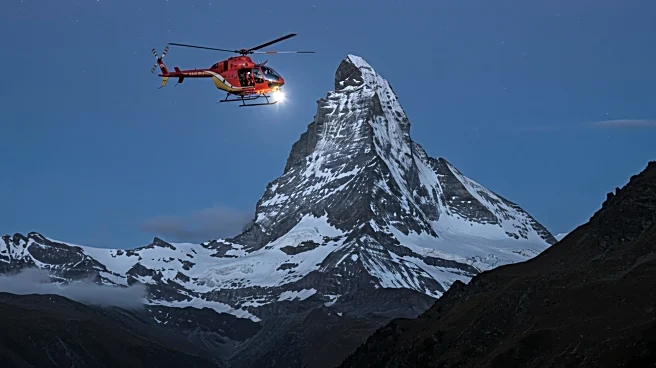What is the story about?
What's Happening?
The rescue mission for Natasha Nagovitsina, a Russian climber stranded on Victory Peak in Kyrgyzstan, has been suspended. Nagovitsina, who broke her leg near the summit on August 12, has been stuck at an altitude of 22,965 feet. The rescue was called off following the death of Italian climber Luca Sinigaglia, who succumbed to hypothermia while attempting to assist her. Sinigaglia had reached Nagovitsina, providing her with essential supplies before his death on August 15. Previous rescue attempts, including helicopter missions, have failed due to adverse weather conditions and a helicopter crash that injured four people. A drone confirmed Nagovitsina was alive earlier in the week, but subsequent flights showed no signs of life as temperatures dropped to minus 9 degrees Fahrenheit.
Why It's Important?
The suspension of the rescue mission highlights the extreme risks associated with high-altitude mountaineering and the challenges faced by rescue teams in such environments. The incident underscores the dangers climbers face and the potential for tragic outcomes despite advanced rescue efforts. This situation may prompt discussions on the safety protocols and preparedness required for climbers attempting such perilous ascents. The international attention on this rescue effort also reflects the global mountaineering community's solidarity and the inherent risks involved in the sport.
What's Next?
With the rescue mission halted, the focus may shift to evaluating the circumstances that led to the failed attempts and the tragic loss of Luca Sinigaglia. Authorities and mountaineering organizations might review safety measures and emergency response strategies for future expeditions. The incident could lead to increased scrutiny on the regulations governing high-altitude climbing and the resources allocated for rescue operations in remote areas.
Beyond the Headlines
The ethical considerations of continuing rescue efforts in life-threatening conditions may be debated, particularly when the likelihood of survival diminishes. The story also raises questions about the responsibilities of climbers and rescue teams in extreme situations, potentially influencing future policies on mountaineering expeditions.
AI Generated Content
Do you find this article useful?














